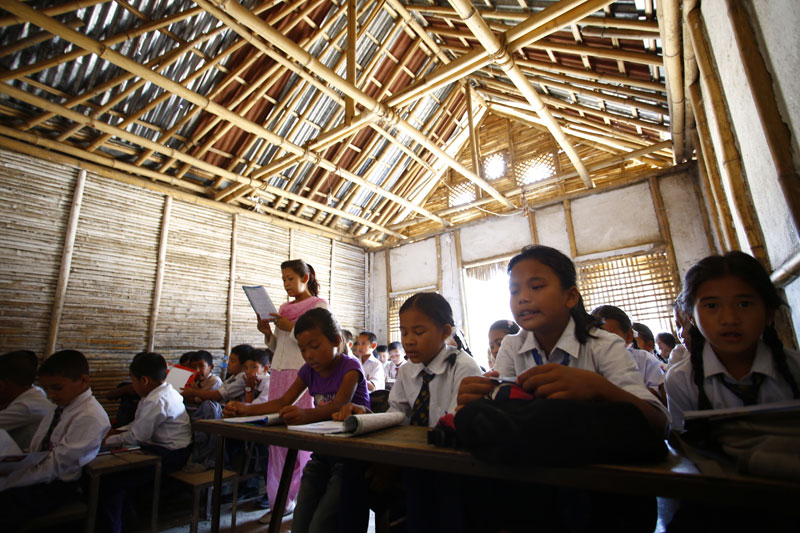Is bamboo schools the answer?
It is the same school that offers classes at Rs 100 per month to students of all levels and is popular in the education sphere of Nepal as the ‘Bamboo School’. Founded by Uttam Sanjel in 2001 with 850 students, “none of its buildings in any place suffered any damage due to the earthquake”. The school has expanded to 42 districts — “We have 43 schools in 42 districts across the nation” and all of these schools are “safe” post-quake.
The secret — visionary approach that Sanjel took 15 years ago to build the school buildings of bamboo as the building material. From doors and windows to walls, everything is constructed out of bamboo — some have wooden windows and doors too. The inside of the walls has cement plaster while they have
roofs out of Corrugated Galvanised Iron (CGI) sheets.
Bamboo reliability
Many quake-hit schools are running classes in temporary shelters and are yet to construct their own buildings. Sanjel advises such schools to opt for bamboo as building material because “it is easily available at local level and inexpensive too. It is easier to work with bamboo than wood”.
The cost though has increased as compared to 10 years ago, as per Sanjel. “One classroom cost some Rs 15,000 to Rs 20,000 then as the building materials were cheaper. Now it would cost you some Rs 100,000 to make a standard room — that can accommodate some 60 to 70 students.”
Constructing any structure, we would want it to last long. But what is the reliability of bamboo? “The sun, rain and fire are its prime enemies. So, for a bamboo wall, paint the outer part with wood primer once every two years to protect it from the sun and rain. Use cement plaster from the inside instead of soil to protect it from the insect infestation.”
The other important thing is to make strong foundation for the structure while there should be use of light materials like CGI sheets from above so that it does not create pressure from the above. And be very wary of fire hazard he says. “If you do so, your bamboo structure lasts from 20 to 30 years”.
But not all bamboo are of good quality. “In the initial days, I used bamboo available in Kathmandu but they were not good.” So, Sanjel nowadays brings them from Jhapa.
Can one expand the building to more than one floor? “Why not? You can have a two-storey bamboo building too and it is safe”.
Having said that, he urges, “Earthquake can hit out country any time again. Fortunately, it was Saturday and most schools were closed when the quake struck this time. Had it been some other day,
many students would have died due to the buildings that are not earthquake-resistant. So, I want to say that if we want to keep our children safe, opt for the bamboo schools.”






